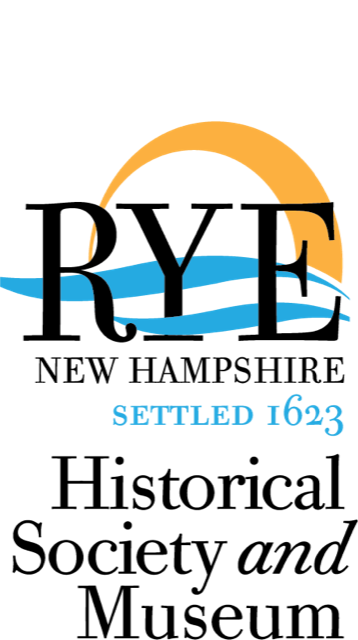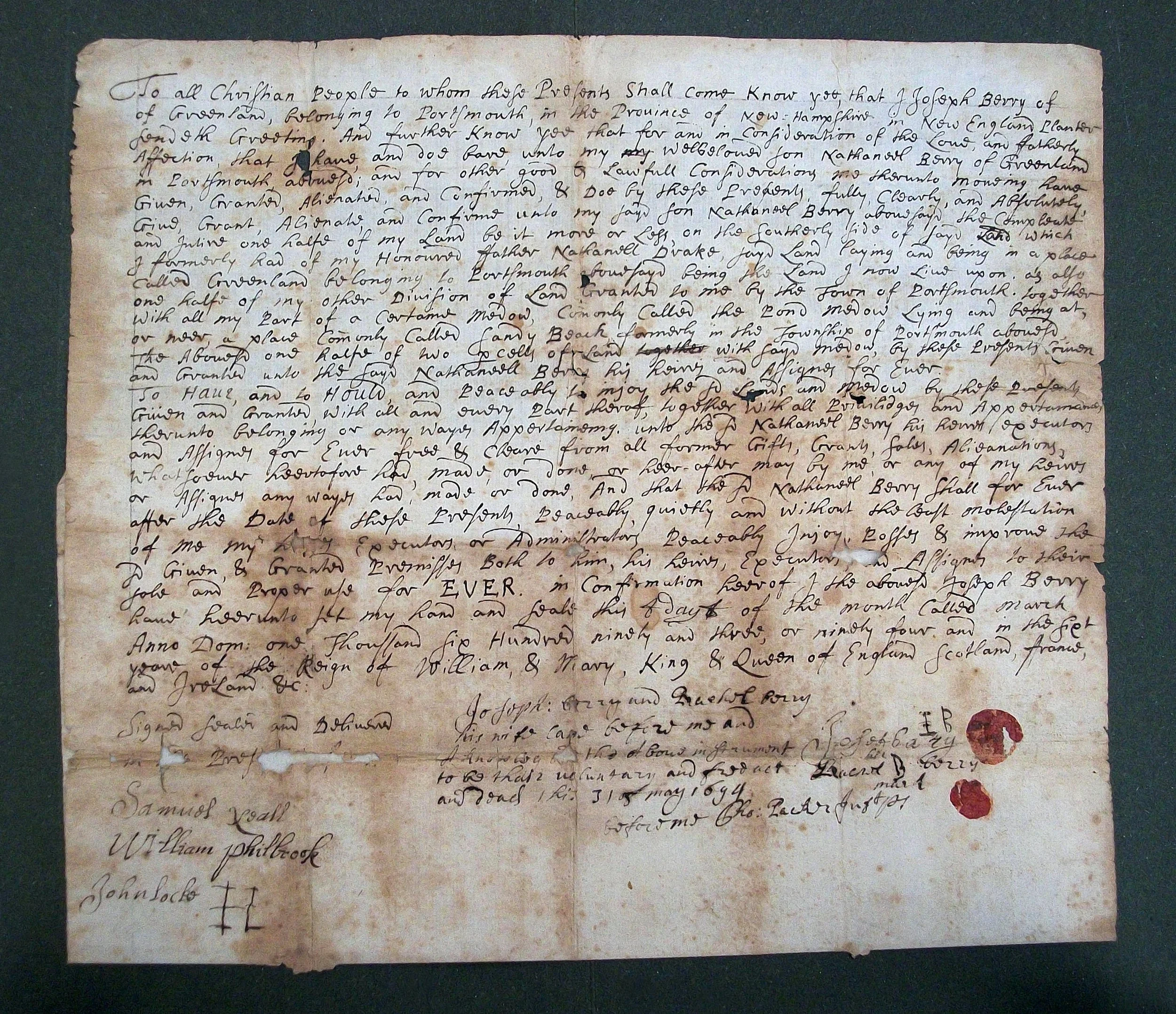Our First Packer Ancestor to come to the New World
Terry Packer is our guest blogger for a series of five posts telling the story about the research and acquisition of an early land transfer document signed by his ancestor.
Part 4 - WITNESSES, SIGNATURES AND SEALS
Our document was drafted by an accomplished writer who was unlikely to be a party to it. He was experienced in the preparation of legal documents and would have been paid for his service. Noticeable care was taken in its creation as writing materials were in short supply and were very expensive. Consequently, many early writings were done on mere scraps of paper. Others have writings at odd angles filling all the margins. Where the material allowed, some have writing on both sides. The organization, neatness, and generous use of materials, including a large portion of additional unused paper that was simply folded over, all suggest a document out of the ordinary.
The identity of the first witness was initially in question. Other than "X", a match for the first letter of Samuel's surname could not be found in documents or handwriting samples of the period. It was then considered the mystery symbol might be the "mark" of a "Samuel eall", but the mystery character is too ornate to be the mark of an illiterate.
Genealogical research eventually resolved Samuel's name and confirmed it as his authentic signature by revealing that everyone named in this document, except Dr. Packer, was closely related. Witness John Locke was the husband of landowner Joseph Berry's sister Elizabeth Berry Locke. Witness William Philbrook was the brother of recipient Nathaniel Berry's wife Elizabeth Philbrook Berry. And finally, we find witness "Samuel Neall" was the brother of witness William Philbrook's wife, Mary Neal Philbrook. Aside: While not related, Joseph and Rachel Berry and the Packers were well acquainted. They all lived in Greenland (pop. 50) and sat near each other in church.
Witness William Philbrook's signature is likely authentic.
John Locke and Joseph and Rachel Berry all initialed the signatures provided for them. Reinforcing that they did not sign is that Joseph Berry's name was misspelled as "Josef bary", a mistake he was unlikely to have made had he signed his own name. Also, the leading J in Josef is identical to the J of witness John Locke indicating the same hand-signed for them both. But Locke and the Berrys could all be considered semi-literate for the time because each was capable of writing a version of his initials. This elevated them above those who could only make a simple cross. Nevertheless, they could not write their complete names and the quality of the initials they applied suggests limited experience writing with a quill.
Illiteracy among women was especially common. At that time formal education was thought to be unnecessary for women's domestic rolls of housekeeping and child rearing. So it is especially notable that while Rachel could not write her complete name, like her husband and John Locke, she had received sufficient education to be able to write her personal mark "B".
It appears the six lines of the Justice of the Peace certification were all written entirely in the original hand of Dr. Thomas Packer on May 31, 1694, nearly three months after the document's execution date. New Hampshire provincial law specified a fee of two shillings be paid for a deed certification service.
The two wax seals were the acknowledgments of Joseph and Rachel Berry. By the early 1600s seals were the official form of identification. The seal itself was often worn as a finger ring and it was common even for illiterate people to own or borrow seals to authenticate their consent on documents. As literacy improved into the 1700s, the use of seals continued but became more decorative, merely accompanying a person's authorizing signature.
MISCELLANY
The quills used in the colonial era were usually duck feathers with a sharpened point. The blotchiness and inconsistent inking of Dr. Packer's writing suggests his quill had suffered damage or, more likely, had just been used extensively.
The conclusion that Samuel Neall and William Philbrook signed for themselves dovetails with the genealogy. John Locke and the Berrys were of the older generation and could only make their marks. Neall and Philbrook were associated with recipient Nathaniel Berry's younger generation. Their elevated literacy is consistent with the historical trend that more capable writers emerged from each successive generation.





